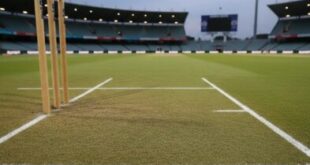‘My body could stand the crutches but my mind couldn’t stand the sideline’ – Micheal Jordan
It is frequently mentioned how sports can be beneficial for both physical and mental health. However, the psychological distress a sports person experiences when they get an injury that could prevent them from playing the sport indefinitely or even merely for a while is something that people these days tend to dismiss. Abrupt collision, or exertion of pressure larger than the body part can physically endure are the main causes of sport-related ailments. Acute and chronic injuries are the two main types of sports injuries. An injury that is acute is one that happens haphazardly such as a sprained wrist or an ankle brought on by poor impact. Excessively using either joints or muscles repeatedly might result in long-term conditions. Chronic injuries may additionally be a result of poor tactics and form defects.The negative impact of injury experienced by an athlete is subjective in nature.
Understanding Post Injury Depression
Studies show that 80–85% of injured athletes suffer from post-injury depression. It is essential to understand their psychological and cognitive state in order to help them. Experiencing physical pain, temporary or permanent impairment of a body part can heighten the feelings of frustration, depressive symptoms, stress and self criticism. It is crucial that the injured player be able to emotionally adjust as a result. Anxiety and feelings of low self worth are two of the psychological implications of injuries on sportspeople that are typically reported. They may feel as though they have lost their identity if they are unable to perform in spite of investing a great deal of energy and time in order to accomplish their goal. Furthermore, players have a strong sense of autonomy over their own bodies which makes them feel in control. A physical injury might not allow them to perform day to day activities or to play the sport again causing them to lose that sense of control. This can lower their self-esteem and accelerate their feelings of sadness and rage. Sportspeople also integrate into a community that includes their teammates, competitors, trainers, and other sports personnel. A player who is hurt could feel isolated from their sports community, which can heighten feelings of loneliness and self-doubt. Fear of getting hurt again is a crucial factor that must be taken into account. A sportsperson may find it challenging to resume their pre-injury form of play after suffering an injury. This happens as a result of their psychological block and overwhelming self-doubt.
It should also be noted that support system, severity of injury, healthcare services as well as the athletic identity all play a role in determining their attitude towards the injury.Playerswho are high performers with an embedded athletic identity or average performers who, in comparison, do not have the same amount of an athletic identity might process a similar injury in a different way.
Psychological Rehabilitation Models for Sports Injury
For a very long time, the term ‘rehabilitation’ in the context of sports meant “physical recovery.” The development of an interdisciplinary approach incorporating psychological models of rehabilitation for athletes has been explored independently by mental health experts. Models given by different psychological researchers are; the stage of return to sports model that takes into account the emotions, actions, and attitude that occur after an accident. Denial, anger, bargaining, sadness, and acceptance are among them. Furthermore, the biopsychosocial model mainly revolves around holistic understanding of the injury and identifying the outcomes of rehabilitation.The cognitive appraisal model, on the other hand, concentrates on the injury’s effects and consequences on cognition. However, in 1998, Weise-Bjornstal and colleagues added validity to personality as a component and assigned value to the response to rehabilitation, thereby integrating this model.
Psychological Factors Associated to Sports Injury
Instead of individual differences, there are certain behavioral factors that can be universal in injured athletes. However, one’s perspective and mindset concerning the injury also differs depending on the severity of the wound. Injuries are more likely to occur in team or contact sports, whereas they are less likely to occur in individual or non-contact sports. An injured sports person should, nevertheless, receive psychological care regardless of the sport that they play or the extent of the injury. The first and foremost thing that a counselor should do is to help the player accept the injury. Along with teaching them relaxation techniques, a counselor should also discuss some healthy coping mechanisms with them. Furthermore, they need to learn how to develop realistic goals for themselves that will inspire them to work hard for their health and recovery. In essence, injured athletes should be taught about the value of optimism during their treatment or counseling. Psychological problems that remain unresolved might have a negative effect on both the player’s performance and the healing process. It may make it difficult for them to set goals and concentrate on their training, which may affect their cognitive ability as well. In addition, this causes a sense of diminished confidence and reduced self-worth. To encourage the athlete, regular check in’s and consistent monitoring of physical and mental progress is an essential factor. Furthermore, to reduce anxiety and stress, it is important to have a strong support system (friends, family, teammates, opponents, etc.). Having a solid support system will reduce the likelihood of developing addiction to substances as well as cardiovascular disorders and loneliness.
In addition, the emphasis should also be on mentally preparing them for their decision to return to the game after an injury. The athlete’s psychological support should not end as soon as their body has recovered. Likewise, it should be emphasized that healing remains an individualized procedure, and various players may require varying amounts of time to recover.
References
● Brooks, T. J., Bradstreet, T. C., & Partridge, J. A. (2022, July 29). Current concepts and practical applications for recovery, growth, and peak performance following significant athletic injury. Frontiers. https://doi.org/10.3389/fpsyg.2022.929487
● Sullivan, L., Ding, K., Tattersall, H., Brown, S., & Yang, J. (2022, May 26). Social Support and Post-Injury Depressive and Anxiety Symptoms among College-Student Athletes. PubMed Central (PMC). https://doi.org/10.3390/ijerph19116458
● How Common Is Post-Injury Depression in Sportspersons? (2022, August 23). How Common Is Post-Injury Depression in Sportspersons? https://www.icliniq.com/articles/emotional-and-mental-health/sports-injuries-and-depression
● 7 Tips For Recovering Mentally After A Sports Injury. (n.d.). 7 Tips for Recovering Mentally After a Sports Injury | Henry Ford Health – Detroit, MI. https://www.henryford.com/blog/2019/06/7-tips-recovery-after-sports-injury
● S. (2022, June 19). The Role of Psychological Factors In Sports Injury Management. Sports Medicine Weekly. https://sportsmedicineweekly.com/sports/the-role-of-psychological-factors-in-sports-injury-management/
By:
Ms. Sejal Goyal and Dr. Garima Rajan
Department of Psychological Sciences,
FLAME University, Pune.
 Newspatrolling.com News cum Content Syndication Portal Online
Newspatrolling.com News cum Content Syndication Portal Online







